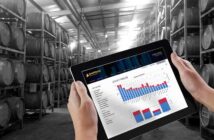By Gary Hartley of GS1 New Zealand
The barcode turns 40 this year – a milestone that will, quite rightly, be celebrated around the world.
It was in April 1973 that a group of grocery retail and supply firms in the United States agreed to a system of common identifiers and barcodes for products they bought and sold.
A common language for business was born! And it was named the Universal Product Code (UPC). The barcode was, and remains today, simply a standardised means by which UPC identifiers – now GS1 identifiers – could be made machine readable.
Barcodes enable ‘automatic data capture’ by infrared scanning of bars and spaces or a matrix of dots printed or engraved on a flat surface. Today, the world is seeing widespread uptake of radio frequency identification (RFID) as another technology for data capture based on the same system of identifiers. The unique identification number for that loaf of bread, shirt or car part you just purchased can be encoded in printed bars and spaces, or as a digital signal on an RFID chip.
Actually both technologies were around in 1973 but bar codes were the obvious choice for use in grocery especially for retail point-of-sale scanning. The first live application happened in June 1974 when a small pack of barcoded Wrigley’s Juicy Fruit chewing gum was scanned and sold to a customer in a supermarket in Troy, Ohio. That event has since been immortalized in the Smithsonian Institution, Washington DC: The gum and its sales receipt are kept on public display in a glass case. The rest, as they say, is history.
The Europeans adopted identifiers compatible with the UPC, and during the 1980s the common numbering system and barcoding went universal. New Zealand was one of the first adopters outside Europe and North America, thanks to the farsightedness of an industry group who formed in 1979 and quickly decided this country should grab the efficiencies that come from using common identifiers and barcodes.
Who today can imagine supermarket shopping without their trolley-load of items being rapidly scanned and totalled at the checkout? Can anyone actually remember what used to happen before the early 1980s.
Without doubt, the mass adoption of common identifiers – each one is globally unique thanks to the inclusion of a unique two-digit identifier for each country – and of barcoding was one of the biggest ideas of the 20th Century. It radically transformed the way people can buy and sell just about anything at both retail and wholesale levels. That we take barcoding so much for granted today is a measure of how omnipresent – and how darned useful – the system is in our lives.
Its origins really can be traced back to that meeting of US grocers 40 years ago. Those present were so sure that this was an idea whose time had come that they took just 5 minutes to accept a proposal for the UPC and its barcode formula.
Today’s global GS1 network is the descendent of the UPC (and its equivalent European Association for Numbering or EAN) – a network of GS1 member organisations in 108 countries of which New Zealand is one. (For the record, GS1 New Zealand is a not-for-profit owned by its 5000-plus members in this country who rely on us to manage, and help develop, the global system of identifiers and data capture standards for the benefit of all.)
So next time you hear ‘beep’ at the supermarket, imagine life without the barcode – the beeps on your grocery shop will be among the five to six billion beeps heard that day around the world. Needless to say, they all add up to huge savings in time and money for you and billions of other people over the course of each year.
You might like to also imagine the future savings and convenience that can come when unique identifiers are combined with RFID technology, as well as barcodes, to ease the passage of goods along supply chains that feed into your supermarket, clothing store or auto parts outlet.
Meantime, happy 40th to the humble barcode.





























































































